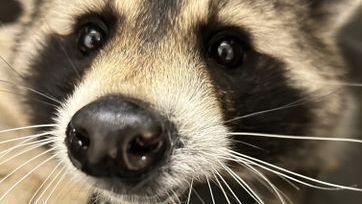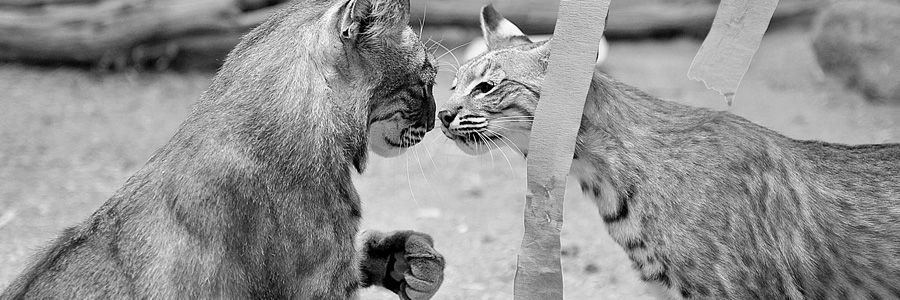RACCOON

Procyon lotor
- Habitat: Moist woodland areas. However, they can also be found in farmlands, suburban, and urban areas. Raccoons prefer to build dens in trees, but may also use woodchuck burrows, caves, mines, deserted buildings, barns, garages, rain sewers, or houses
- Status: Least Concern
- Population Trend: Increasing
- Diet: Nuts, wild grapes, cherries, apples, persimmons, berries, and acorns, crayfish, insects, rodents, frogs, fish, and bird eggs are all possible components of a raccoon's diet. Raccoons have adapted to include trash and other food available in suburban and urban areas in their diet
- Weight: 4 - 23 lbs.
- Size: 24" - 28" long; 9" - 12" tall
- Lifespan: 5 - 16 years in captivity; up to 20 years in human care
- Interesting Facts:
- Raccoons overcome winter food shortages by becoming dormant. This period may last from a few days, in response to occasional southern cold spells, to four to six months at northern latitudes. Northern raccoons are able to do this by accumulating large amounts of body fat during the late summer and autumn. Most will double their springtime body weight in order to provide themselves with enough energy to sleep through the winter.
- In early spring males mate with more than one female. Annual litters contain one to six (usually three or four) young, born in late spring after a gestation period of 60–73 days.
- Like all raccoons, the Northern American Raccoon is an intelligent and inquisitive animal. The hairless front feet are highly dexterous and resemble slender human hands, the hind feet being thicker and longer.



